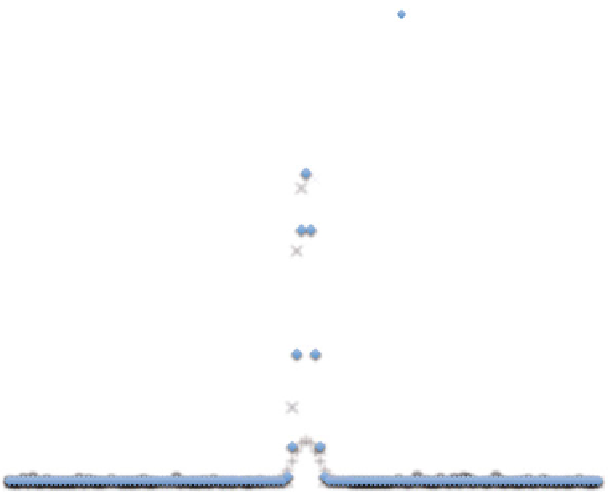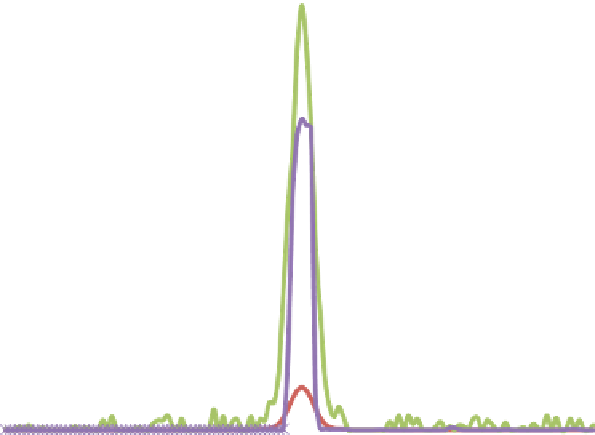Biomedical Engineering Reference
In-Depth Information
Algorithm 7
The RL-TV deconvolution algorithm
Input:
Observation
i
(
x
)
∀
x
∈ Ω
s
, background
b
(
x
)
≥
0, regularization parameter
λ ∈
R
+
,
+
.
Output:
Restored specimen
o
(
x
).
1: Calculate PSF
h
(
x
)
∈O
(Eq.
4.5
),
2: Initialize:
n ←
0,
o
criterion
ε ∈
R
(
n
)
(
x
)
←
Mean(
i
(
x
)).
(
n
)
(
n−
1)
(
n
)
3:
while
|o
≥ ε
do
− o
|/o
{
Calculate div(
∇o
n
(
x
)
/|∇o
n
(
x
)
|
ε
) by the
minmod
scheme.
}
4:
(
n
+1)
(
x
)
by Eq. (
4.29
).
}
5:
{
Deconvolve:
o
(
n
+1)
(
x
)
for
6:
{
Sub-space
projection
(scale):
o
total
number
of
photons
preservation
x
o
(
n
)
(
x
)=
x
i
(
x
)
}
(
n
+1)
(
x
)
<
0
to zero.
}
7:
{
Sub-space projection (positivity): Set
o
(
n
)
(
x
)
← o
(
n
+1)
(
x
)
and
n ←
(
n
+1)
.
}
8:
{
Set:
o
9:
end while
400
Original bead
Blurred bead
Observed bead
Restored bead
350
300
250
200
150
100
50
0
1
20
39
58
77
96
115
X
Fig. 4.10
Comparison of the radial intensity profiles for an original
100
nm fluorescent sim-
ulated bead sample, the blurred bead without any noise, the observed bead (after removing
the background), and the restored bead using deconvolution. The result was obtained with a
regularization parameter
λ
=0
.
002, and the iterations were terminated at the 100th iteration while
the convergence was after about 50 iterations
In addition to simulated data, we tested the algorithm on the
Convallaria
specimen of Fig.
4.3
b in Sect.
4.2.1.1
. This thin sample was imaged using a





































































Search WWH ::

Custom Search